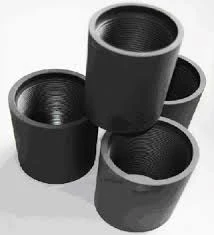- Afrikaans
- Albanian
- Amharic
- Arabic
- Armenian
- Azerbaijani
- Basque
- Belarusian
- Bengali
- Bosnian
- Bulgarian
- Catalan
- Cebuano
- Corsican
- Croatian
- Czech
- Danish
- Dutch
- English
- Esperanto
- Estonian
- Finnish
- French
- Frisian
- Galician
- Georgian
- German
- Greek
- Gujarati
- Haitian Creole
- hausa
- hawaiian
- Hebrew
- Hindi
- Miao
- Hungarian
- Icelandic
- igbo
- Indonesian
- irish
- Italian
- Japanese
- Javanese
- Kannada
- kazakh
- Khmer
- Rwandese
- Korean
- Kurdish
- Kyrgyz
- Lao
- Latin
- Latvian
- Lithuanian
- Luxembourgish
- Macedonian
- Malgashi
- Malay
- Malayalam
- Maltese
- Maori
- Marathi
- Mongolian
- Myanmar
- Nepali
- Norwegian
- Norwegian
- Occitan
- Pashto
- Persian
- Polish
- Portuguese
- Punjabi
- Romanian
- Russian
- Samoan
- Scottish Gaelic
- Serbian
- Sesotho
- Shona
- Sindhi
- Sinhala
- Slovak
- Slovenian
- Somali
- Spanish
- Sundanese
- Swahili
- Swedish
- Tagalog
- Tajik
- Tamil
- Tatar
- Telugu
- Thai
- Turkish
- Turkmen
- Ukrainian
- Urdu
- Uighur
- Uzbek
- Vietnamese
- Welsh
- Bantu
- Yiddish
- Yoruba
- Zulu
bull plug definition
Understanding the Bull Plug Definition and Applications
A bull plug, often referred to within various technical and engineering circles, is a specialized fitting primarily used in pneumatic and hydraulic systems. Its design and function are crucial for professionals in fields such as fluid mechanics, automotive engineering, and manufacturing. To grasp the importance of a bull plug, one must first understand its definition, construction, applications, and benefits.
Definition of Bull Plug
A bull plug is a type of mechanical fitting that provides a seal in systems that either contain fluids or gases. It is typically used to block the end of a pipe or fitting temporarily, preventing leakage and maintaining system integrity. The bull plug can be made from different materials, including metal and plastic, depending on the application and the media involved—whether it be water, oil, air, or chemicals. The term bull plug often comes into play in contexts where robust and durable sealing solutions are required under potentially high pressure or adverse environmental conditions.
Construction and Types
The design of a bull plug is relatively straightforward, featuring a cylindrical body that fits snugly into the corresponding pipe or fitting. Depending on the intended use, bull plugs come in various sizes and configurations, including threaded, slip-on, or weld-on varieties. Some bull plugs are equipped with O-rings to enhance their sealing capabilities, while others may have a flat or tapered end, depending on the type of connection required.
In terms of materials, commonly used options for bull plugs include stainless steel, brass, aluminum, and high-density polyethylene (HDPE). Each material offers distinct advantages, such as resistance to corrosion, heat, or chemical exposure, making it essential to select the appropriate bull plug for specific applications.
Applications of Bull Plugs
bull plug definition

Bull plugs are found in various industries and applications. They are commonly used in plumbing systems to seal off pipelines temporarily during maintenance, ensuring that fluids do not leak out. In pneumatic systems, bull plugs help in the testing and maintenance processes by allowing technicians to isolate certain sections of the system without losing pressure or introducing contaminants.
In the automotive industry, bull plugs are often utilized in mass air flow (MAF) sensors and drainage systems to block off ports during diagnostic checks or when replacing certain components. Their design allows for a simple and effective means of creating a stable environment for testing or repairs.
In manufacturing, bull plugs are critical when setting up production lines that utilize pneumatic systems. By providing a secure way to seal off ports and fittings, manufacturers can avoid spills and ensure smooth operation of machinery.
Benefits of Using Bull Plugs
The use of bull plugs offers several advantages. Firstly, they provide an effective seal that prevents leaks, which can lead to failures or inefficiencies within a system. Secondly, they are easy to install and remove, making maintenance tasks less labor-intensive. Their versatility allows them to be used in a wide range of applications, adapting to different media and pressure conditions.
Additionally, bull plugs can enhance safety in a work environment. By securely sealing off systems that are under pressure, they minimize the risk of accidental releases that could harm personnel or cause property damage. Also, their durability ensures that they can withstand various environmental conditions, providing long-term reliability in critical systems.
Conclusion
In summary, a bull plug is a vital component in many engineering and mechanical applications, serving as a robust sealing solution that enhances system integrity and safety. Its simple design, combined with its ability to prevent leaks, make it an indispensable tool in various industries, from plumbing to automotive manufacturing. Understanding its definition and applications helps professionals make informed choices about their use and deployment, ensuring efficient and safe operations across numerous fields.
-
Tubing Pup Joints: Essential Components for Oil and Gas OperationsNewsJul.10,2025
-
Pup Joints: Essential Components for Reliable Drilling OperationsNewsJul.10,2025
-
Pipe Couplings: Connecting Your World EfficientlyNewsJul.10,2025
-
Mastering Oilfield Operations with Quality Tubing and CasingNewsJul.10,2025
-
High-Quality Casing Couplings for Every NeedNewsJul.10,2025
-
Boost Your Drilling Efficiency with Premium Crossover Tools & Seating NipplesNewsJul.10,2025







